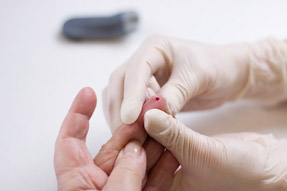AMA's immediate past president reflects on medicine's future
Ardis Dee Hoven, MD, FACP, used her year as president of the American Medical Association to bolster the role of primary care physicians across the field of medicine.
Ardis Dee Hoven, MD, FACP, ended her tenure as president of the American Medical Association (AMA) June 10. She brought to that position a background as a primary care physician and an internal medicine specialist at a time when the role of primary care physicians in the entire health care system is rapidly changing.
As she steps down from her presidency and returns to her work as a primary care physician and infectious disease specialist at a Ryan White HIV clinic in Lexington, Ky., she spoke to ACP Internist about what she was able to accomplish specifically for primary care during her tenure.
Q: What was your vision for primary care in the changing U.S. health care system during your year as the AMA's president?
A: Whether you're in internal medicine or other primary care specialties, we are all members of a health care team. Primary care physicians are the ones necessary to provide the infrastructure to be sure that the care is coordinated, that the care is seamless, and it's the highest-quality care. So there's a lot of responsibility put on the primary care physician, the internist, or even some subspecialists who end up functioning as primary care physicians, such as I do in HIV care.
I see the internist or the primary care physician as the one who is responsible for that stable infrastructure and care coordination. The internist then works with our physician colleagues, the subspecialists, the “neighborhood,” in collaborating on and coordinating care and maintaining a continuum of care for the patient. The patient is in the center of it.
Q: What were you able to accomplish to aid internists as they create this atmosphere of coordinated care?
A: My biggest priority was the AMA's work on the RAND report, “Factors Affecting Physician Professional Satisfaction and Their Implications for Patient Care, Health Systems, and Health Policy.” Over the past couple of years, we have become acutely aware of the discomfort, the dissatisfaction, that many physicians had, and particularly those in primary care, around what was happening to health care in the U.S. The RAND Corporation looked at 30 practices in 6 states. They weren't all primary care. They reflected the diversity of the AMA itself.
It's an important report for all physician practices, and particularly for primary care, because what we learned were some very straightforward, simple truths. Anything that gets in the way of being able to deliver the highest-quality care to patients causes doctors dissatisfaction and frustration. And those kinds of things revolve around regulatory issues, administrative burdens—you can imagine the extent of those—the layering on of regulations and all the paperwork and secretarial work that practices have to do. And primary care practices get particularly hit with this. Also, there are all the issues surrounding the electronic medical record.
We are now working on how to correct all that. What do we do to make life better to allow physicians to do what they enjoy most, which is spending the time with the patient in the examining room, not dealing with all the administrative secretarial clerical work, and trouble with the electronic medical records as well.
We've spent a lot of time looking at the models of care delivery, such as patient-centered medical homes and accountable care organizations, as well as others more conducive to surgical practices, like bundled care. We are looking at these models of care: Are they working? Are they meeting the needs of patients and their doctors? It is an ongoing piece of work. Primary care for me is such an important lynchpin in the whole spectrum of care. We have to be very sensitive to it.
Q: What do you see that remains to be done?
A: Improving health outcomes. I know it's very important for primary care physicians, because we're taking on type 2 diabetes and hypertension. Patients at risk for type 2 diabetes and cardiovascular problems related to hypertension pass through our offices, our clinics, our emergency departments, our operating rooms, and our radiology suites every day. They are our patients.
For primary care physicians in particular, this particular piece of work about improving health outcomes is being joyfully accepted. For both of these improving health outcomes objectives, there are pilots underway right now to help us get our arms around this.
One of the important things about what we do as physicians ... is the viability and sustainability of the physician practice. I'm not just talking about 2- or 3-physician group practices. I'm also talking about physicians who practice in integrated health systems or academic medical centers. They are all affected right now with what's going on with health care delivery change.
And I think that for primary care physicians in particular, we've got to make sure that the payment models are out there that are going to reward physicians for providing the care that many of us have done for decades without getting paid for it.



